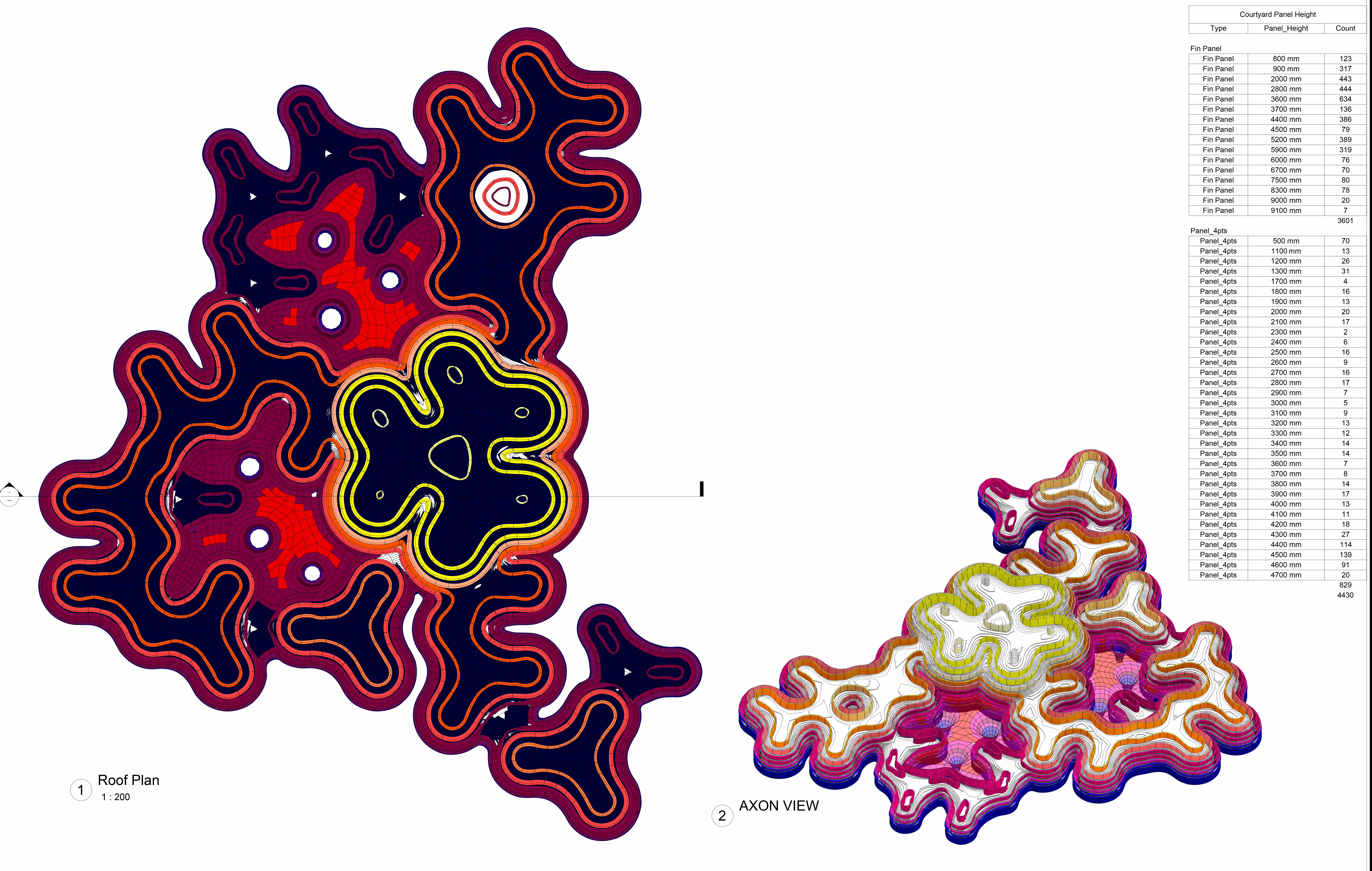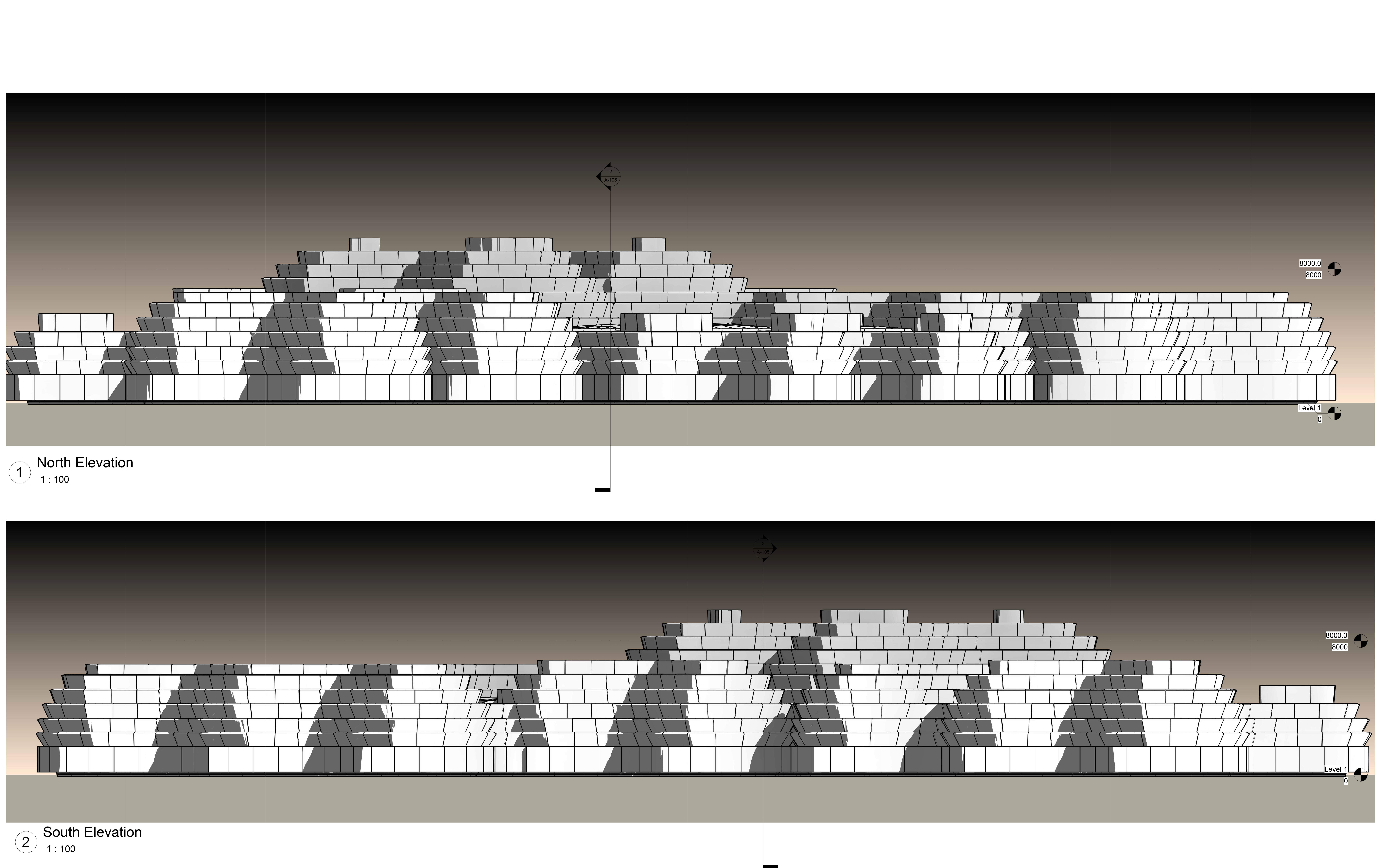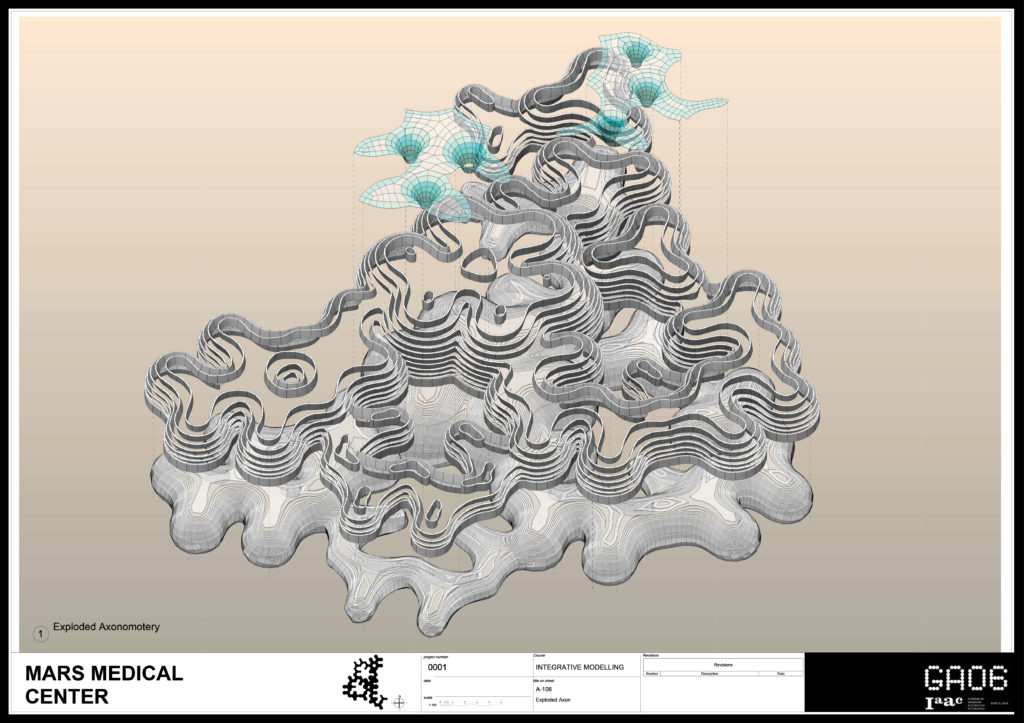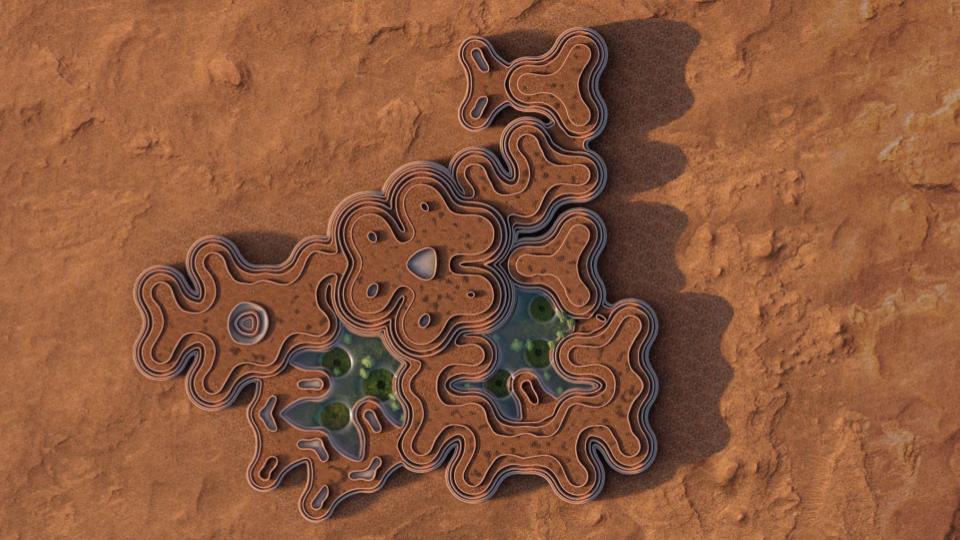
As a part of our studio project, we had to design a human colony on Mars for 300pax, and our group was responsible for designing the Medical center.
Our proposal is a modular building 3D-printed using the soil (regolith) from the site to minimize the material and equipment required from the earth. The module comprises three interconnected metaball spheres and a central column deployed on-site using a hexagonal grid. To construct the module, we propose employing an inflatable formwork for the 3D printing layering and positioning the arm 3D printer at the center of the column.
Due to the harsh building conditions on Mars, a 2-meter thick wall is necessary to protect the interior spaces from cosmic radiation. However, to avoid the hassle of printing such thick walls, we propose using perimetral fin skin along the structure’s geometry. These would be filled with soil, achieving the required 2-meter thickness, saving material, and reducing construction time.

Modeling Method
The objective of the course is to model in Revit the geometry generated in Grasshopper using the plugin Rhino Inside. However, due to the complexity of the form, we simplified the geometry by reducing the number of mesh faces to ensure Revit could process it efficiently. After simplification, we subdivided the geometry into three parts to follow different modeling strategies.
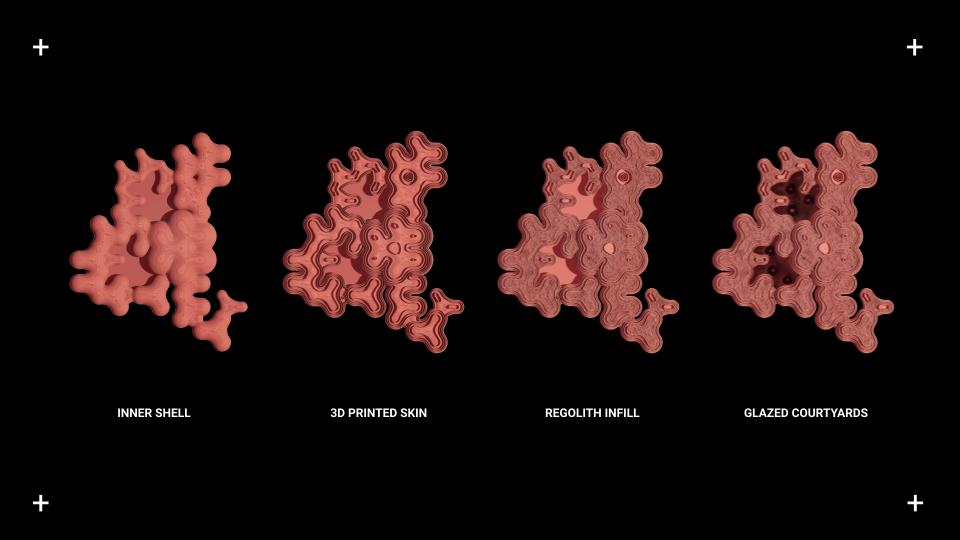
For the inner shell of the building, we used the component floors in Rhino inside by extracting the contour lines every 100mm and using them as input for the floor profile. We did not get the expected result when we tried to use the same method for the 3D-printed skin. We changed our approach, using adaptive panels by subdividing the surfaces into groups of six points to achieve the desired curved result. And last, we used adaptive panels of 4 points to model the glazed courtyard.
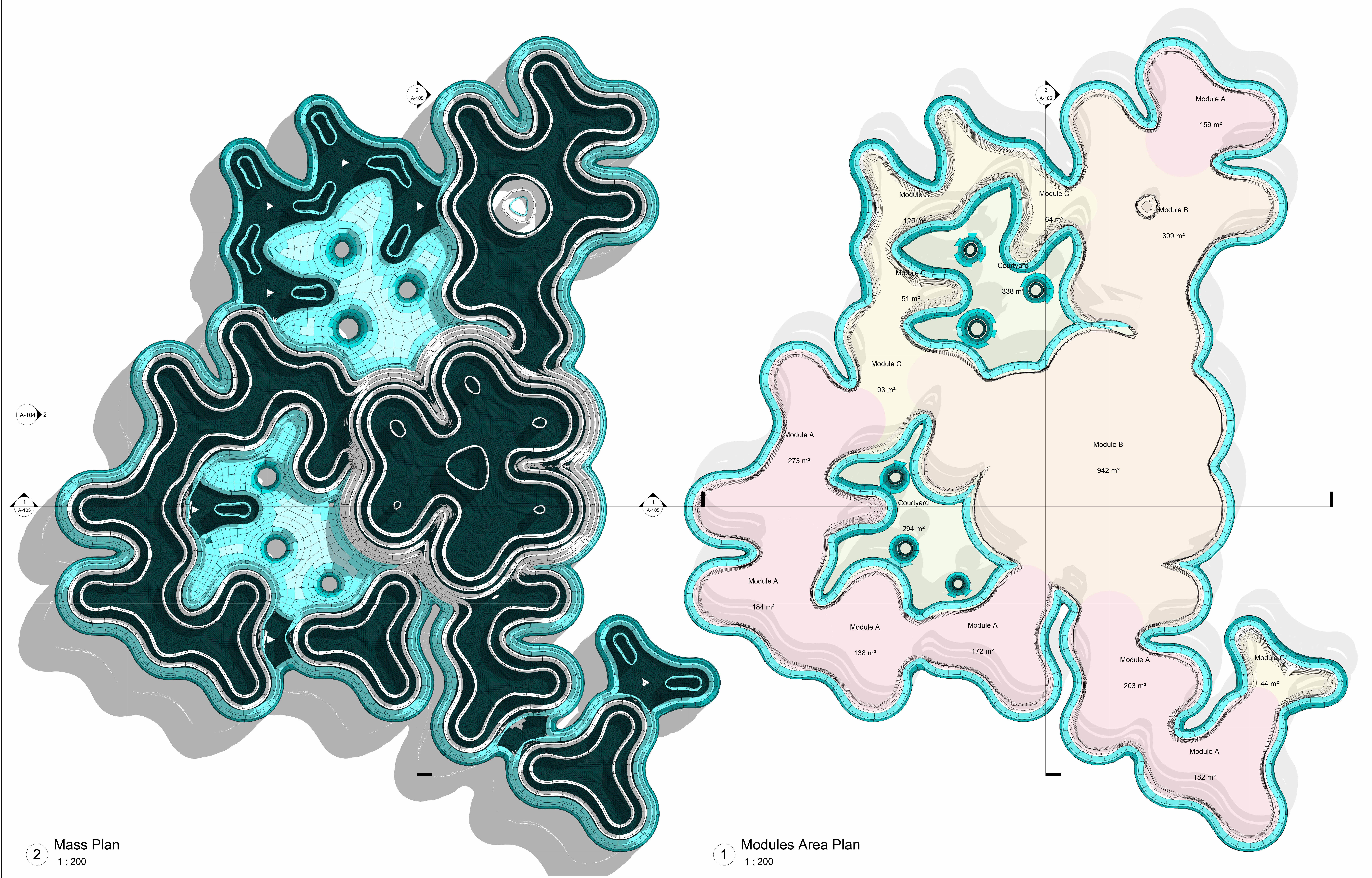
In Rhino Inside, we established a height parameter for each modeled element. This enables us to organize each element according to its construction sequence and generate a corresponding color filter to depict the construction order.
